Grow Your Own Tomatoes – imagine biting into a juicy, sun-ripened tomato, bursting with flavor, knowing you nurtured it from a tiny seed right in your own backyard! Forget bland, store-bought tomatoes; this year, we’re diving headfirst into the rewarding world of home gardening and unlocking the secrets to cultivating the most delicious tomatoes you’ve ever tasted.
The history of tomato cultivation is fascinating, stretching back to South America where they were initially considered ornamental rather than edible. Thankfully, tastes evolved, and now tomatoes are a staple in cuisines worldwide. But let’s be honest, nothing beats the taste of a homegrown tomato. That’s why I’m so excited to share these simple yet effective DIY tricks and hacks that will transform your tomato-growing game, regardless of your experience level.
Why do you need these DIY tricks? Because growing tomatoes can sometimes feel like a battle against pests, diseases, and unpredictable weather. But with a few clever strategies, you can significantly increase your yield, improve the flavor of your tomatoes, and enjoy a bountiful harvest all season long. Plus, there’s something incredibly satisfying about nurturing a plant from seed to fruit – it’s a connection to nature that’s good for the soul. So, let’s get our hands dirty and learn how to grow your own tomatoes like a pro!
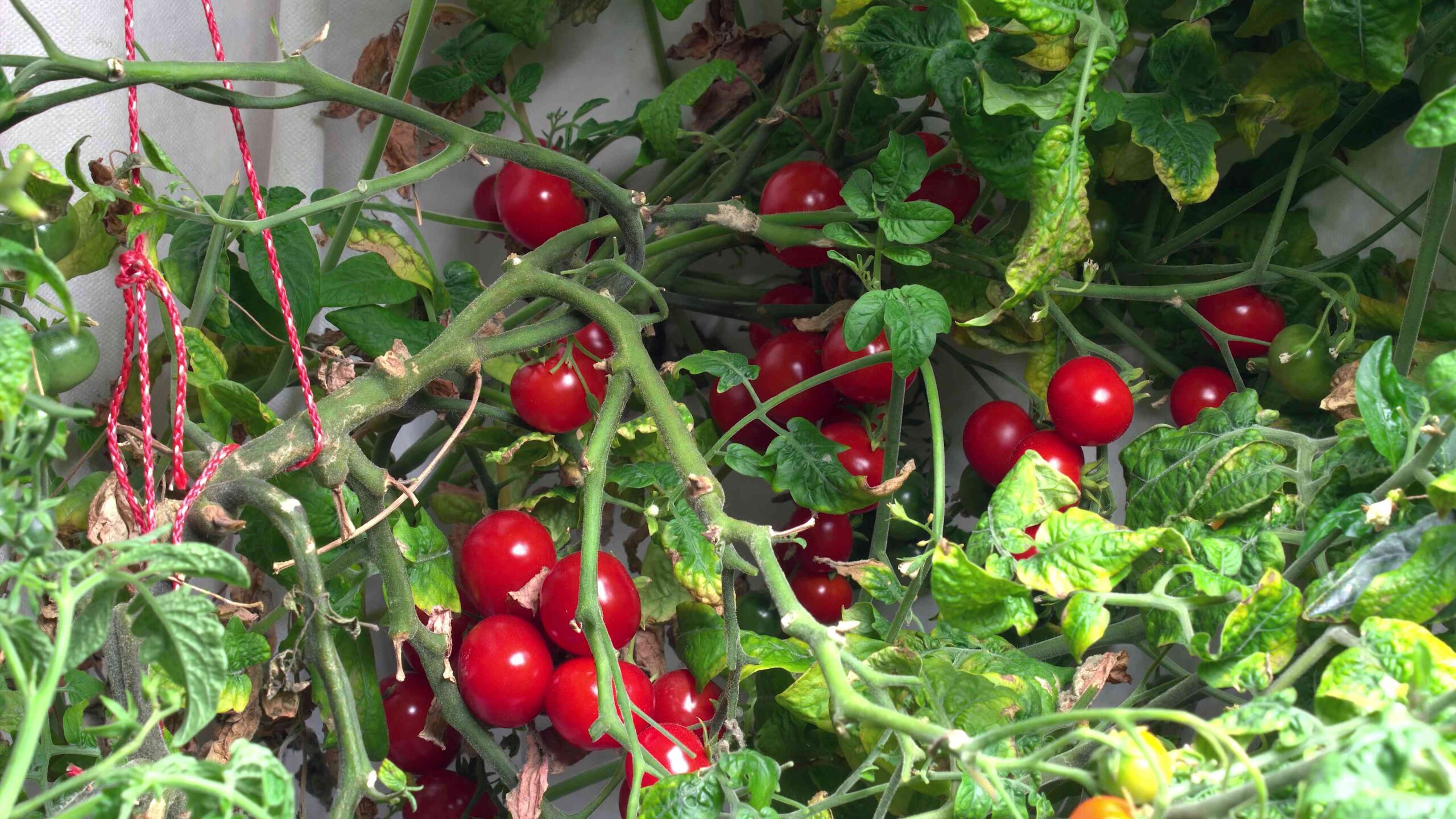
Growing Your Own Delicious Tomatoes: A Beginner’s Guide
Okay, tomato lovers, let’s get our hands dirty! I’m going to walk you through everything you need to know to grow your own juicy, flavorful tomatoes right in your backyard (or even on your balcony!). Trust me, there’s nothing quite like the taste of a homegrown tomato, and it’s way easier than you might think.
Choosing Your Tomato Varieties
Before we even think about planting, we need to decide what kind of tomatoes we want to grow. There are literally hundreds of varieties, so it can be a little overwhelming. Here’s a breakdown to help you choose:
* Determinate vs. Indeterminate: This is the big one!
* Determinate tomatoes grow to a certain size and then produce all their fruit at once, usually over a period of a few weeks. They’re great for canning or making sauce because you’ll have a big harvest all at the same time. They also tend to be more compact, making them suitable for smaller spaces. Popular determinate varieties include Roma, Celebrity, and Rutgers.
* Indeterminate tomatoes keep growing and producing fruit throughout the entire growing season. They need staking or caging to support their growth, as they can get quite tall and sprawling. Indeterminate varieties are perfect if you want a continuous supply of tomatoes for salads and sandwiches. Some popular indeterminate varieties are Beefsteak, Early Girl, and Cherry tomatoes.
* Tomato Size: Do you want tiny cherry tomatoes, medium-sized slicers, or giant beefsteaks?
* Cherry tomatoes are small, sweet, and perfect for snacking or adding to salads.
* Slicer tomatoes are your classic sandwich tomatoes, with a good balance of sweetness and acidity.
* Beefsteak tomatoes are huge, meaty, and ideal for burgers or making thick slices for sandwiches.
* Color: Don’t limit yourself to just red! You can find tomatoes in yellow, orange, purple, green, and even striped varieties. Each color has a slightly different flavor profile.
* Disease Resistance: Look for varieties that are resistant to common tomato diseases like Fusarium wilt (F), Verticillium wilt (V), and Tomato Mosaic Virus (T). This will save you a lot of headaches (and potential crop failures) down the road.
My personal favorites? I love growing a mix of cherry tomatoes (Sungold is amazing!), a good slicer like Early Girl, and a beefsteak variety like Brandywine for those truly special summer sandwiches.
Starting Your Tomatoes: Seeds vs. Seedlings
You have two options for starting your tomato plants: from seed or from seedlings (also called transplants).
* Starting from Seed: This gives you the most control over the varieties you grow and is generally more economical. However, it requires more time and effort. You’ll need to start your seeds indoors about 6-8 weeks before the last expected frost in your area.
* Buying Seedlings: This is the easier option, especially for beginners. You can find a wide variety of tomato seedlings at your local garden center or nursery. Just make sure to choose healthy-looking plants with sturdy stems and no signs of disease.
I usually start some of my tomatoes from seed and buy a few seedlings to get a head start on the season.
Starting Tomatoes from Seed: A Step-by-Step Guide
If you’re feeling adventurous, let’s start some tomatoes from seed!
1. Gather Your Supplies: You’ll need:
* Tomato seeds (choose your varieties!)
* Seed starting mix (this is different from regular potting soil)
* Seed starting trays or small pots
* A spray bottle
* A heat mat (optional, but helpful)
* A grow light (also optional, but highly recommended)
* A clear plastic dome or plastic wrap
2. Sow the Seeds:
* Moisten the seed starting mix with water. It should be damp but not soggy.
* Fill the seed starting trays or pots with the moistened mix.
* Make a small indentation (about 1/4 inch deep) in the center of each cell or pot.
* Place 2-3 tomato seeds in each indentation. This increases your chances of at least one seed germinating.
* Gently cover the seeds with the seed starting mix.
* Lightly mist the surface with water.
3. Create a Humid Environment:
* Cover the seed starting trays or pots with a clear plastic dome or plastic wrap. This will help to retain moisture and create a humid environment that is ideal for germination.
4. Provide Warmth and Light:
* Place the seed starting trays or pots on a heat mat (if using) and under a grow light (if using). The ideal temperature for germination is around 75-85°F.
* If you don’t have a heat mat or grow light, you can place the trays or pots in a warm, sunny location. However, be sure to monitor the moisture levels closely, as the soil may dry out more quickly.
5. Monitor and Water:
* Check the seed starting trays or pots daily and mist the surface with water as needed to keep the soil moist.
* Once the seeds germinate (usually within 5-10 days), remove the plastic dome or plastic wrap.
* If you’re using a grow light, keep it on for 14-16 hours per day.
6. Thin the Seedlings:
* Once the seedlings have their first true leaves (the leaves that appear after the initial seed leaves), thin them to one seedling per cell or pot. Choose the strongest, healthiest-looking seedling and snip off the others at the soil line. Don’t pull them out, as this can disturb the roots of the remaining seedling.
7. Harden Off the Seedlings:
* About a week before you plan to transplant the seedlings outdoors, you’ll need to “harden them off.” This means gradually exposing them to outdoor conditions so they can adjust to the sun, wind, and temperature changes.
* Start by placing the seedlings outdoors in a sheltered location for just a few hours each day. Gradually increase the amount of time they spend outdoors each day, until they can tolerate a full day of outdoor conditions.
* Be sure to protect the seedlings from frost or extreme temperatures during the hardening off process.
Transplanting Your Tomatoes Outdoors
Now for the exciting part – getting those tomato plants into the ground!
1. Choose the Right Location: Tomatoes need at least 6-8 hours of sunlight per day. Choose a location that gets plenty of sun and has well-drained soil.
2. Prepare the Soil:
* Amend the soil with compost or other organic matter to improve drainage and fertility.
* Tomatoes prefer slightly acidic soil with a pH of 6.0-6.8. You can test your soil pH with a soil testing kit and amend it accordingly.
3. Dig the Planting Holes:
* Dig holes that are deep enough to bury the tomato seedlings up to their first set of leaves. This will encourage the development of a strong root system.
* Space the holes according to the mature size of the tomato variety you’re growing. Determinate varieties can be spaced closer together (about 2-3 feet apart) than indeterminate varieties (about 3-4 feet apart).
4. Plant the Seedlings:
* Gently remove the tomato seedlings from their pots or trays.
* Loosen the roots slightly before planting.
* Place the seedlings in the planting holes and backfill with soil.
* Water the seedlings thoroughly.
5. Stake or Cage Your Tomatoes:
* Indeterminate tomato varieties need staking or caging to support their growth. This will prevent the plants from sprawling on the ground and will make it easier to harvest the fruit.
* Install the stakes or cages at the time of planting to avoid damaging the roots later on.
6. Mulch Around the Plants:
* Apply a layer of mulch around the tomato plants to help retain moisture, suppress weeds, and regulate soil temperature.
* Organic mulches like straw, hay, or wood chips are a good choice.
Caring for Your Tomato Plants
Okay, the plants are in the ground. Now what? Here’s how to keep them happy and healthy:
* Watering: Water your tomato plants deeply and regularly, especially during hot, dry weather. Aim to water at the base of the plant to avoid wetting the foliage, which can lead to disease.
* Fertilizing: Feed your tomato plants with a balanced fertilizer every few weeks. Look for a fertilizer that is specifically formulated for tomatoes.
* Pruning: Pruning is especially important for indeterminate tomato varieties. Remove the “suckers” that grow in the crotches between the
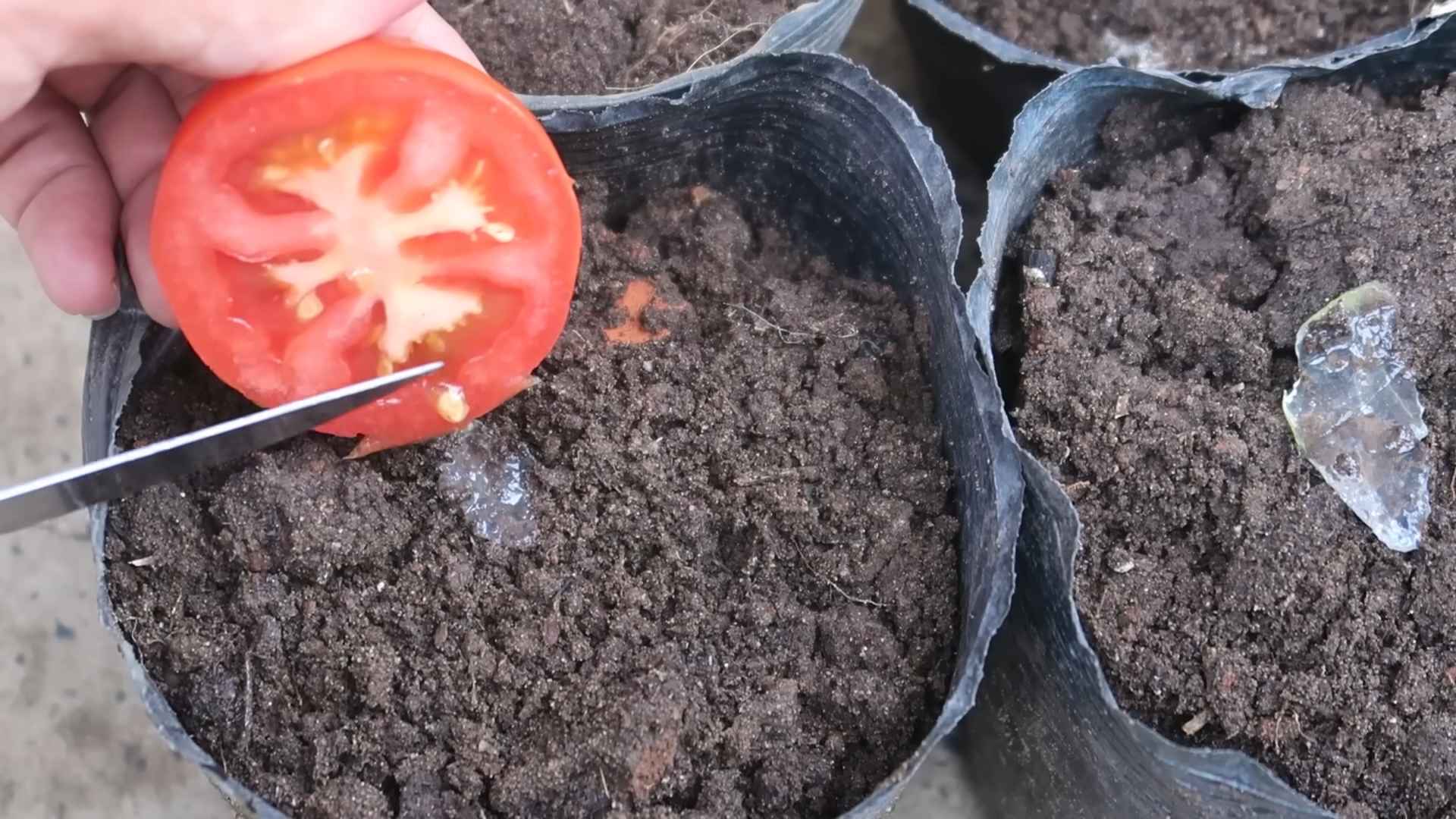
Conclusion
So, there you have it! Growing your own tomatoes isn’t just a gardening project; it’s a gateway to flavor, freshness, and a deeper connection with your food. We’ve explored the simple yet effective methods to cultivate these ruby red jewels right in your backyard, balcony, or even on a sunny windowsill. From selecting the right variety for your climate to nurturing seedlings and providing essential support, every step is a rewarding experience.
Why is this DIY trick a must-try? Because store-bought tomatoes, while convenient, often lack the vibrant taste and nutritional value of homegrown ones. You control the entire process, ensuring your tomatoes are free from harmful pesticides and bursting with natural sweetness. Plus, there’s an unparalleled satisfaction in harvesting a tomato you’ve nurtured from seed to fruit. It’s a tangible accomplishment that connects you to the earth and provides a delicious reward.
But the journey doesn’t end here! Feel free to experiment with different tomato varieties. Try heirloom tomatoes for unique flavors and colors, or cherry tomatoes for snacking straight from the vine. Consider companion planting basil or marigolds alongside your tomatoes to deter pests and enhance their growth. You can also explore different growing methods, such as container gardening, raised beds, or even hydroponics, to find what works best for your space and lifestyle.
Don’t be afraid to get your hands dirty and embrace the learning process. Gardening is all about trial and error, and even experienced gardeners face challenges. The key is to observe your plants, learn from your mistakes, and adapt your approach as needed.
We wholeheartedly encourage you to embark on this tomato-growing adventure. It’s a fun, educational, and ultimately delicious experience that will transform the way you think about tomatoes. And most importantly, we want to hear about your successes (and even your challenges!). Share your experiences, tips, and photos with us in the comments below. Let’s create a community of tomato enthusiasts and inspire others to discover the joy of growing their own food. After all, nothing beats the taste of a sun-ripened, homegrown tomato! This method of **grow your own tomatoes** is not only cost-effective but also environmentally friendly, reducing your carbon footprint by minimizing transportation and packaging. So, grab your seeds, get planting, and get ready to savor the taste of summer!
Frequently Asked Questions (FAQ)
Q: What is the best time to start growing tomatoes?
A: The best time to start growing tomatoes depends on your climate. In general, you should start seeds indoors 6-8 weeks before the last expected frost. If you live in a warmer climate with a longer growing season, you can start seeds directly in the ground after the last frost. However, starting indoors gives you a head start and allows you to select the strongest seedlings. Check your local weather forecasts and gardening resources to determine the optimal planting time for your region.
Q: What kind of soil is best for growing tomatoes?
A: Tomatoes thrive in well-drained, fertile soil with a slightly acidic pH (around 6.0-6.8). Amend your soil with compost or other organic matter to improve drainage, aeration, and nutrient content. Avoid heavy clay soils, as they can become waterlogged and hinder root growth. If you’re growing in containers, use a high-quality potting mix specifically formulated for vegetables.
Q: How much sunlight do tomatoes need?
A: Tomatoes are sun-loving plants and require at least 6-8 hours of direct sunlight per day to produce abundant fruit. Choose a location that receives full sun throughout the day. If you’re growing indoors, supplement with grow lights if necessary. Insufficient sunlight can result in leggy plants with poor fruit production.
Q: How often should I water my tomato plants?
A: Water tomato plants deeply and regularly, especially during hot, dry weather. Aim to keep the soil consistently moist but not waterlogged. Water at the base of the plant to avoid wetting the foliage, which can promote fungal diseases. A good rule of thumb is to water when the top inch of soil feels dry to the touch. Mulching around the plants can help retain moisture and suppress weeds.
Q: What are some common tomato pests and diseases?
A: Tomatoes are susceptible to various pests and diseases, including aphids, whiteflies, tomato hornworms, blight, and blossom end rot. Regularly inspect your plants for signs of infestation or disease. Use organic pest control methods, such as insecticidal soap or neem oil, to control pests. Prevent diseases by providing good air circulation, avoiding overhead watering, and using disease-resistant varieties. Blossom end rot is often caused by calcium deficiency, which can be addressed by adding calcium to the soil or using a calcium-rich foliar spray.
Q: How do I support my tomato plants?
A: Tomato plants, especially indeterminate varieties, require support to prevent them from sprawling on the ground and becoming susceptible to pests and diseases. Use stakes, cages, or trellises to support the plants as they grow. Tie the stems loosely to the support structure with soft twine or plant ties. Pruning suckers (the small shoots that grow between the main stem and branches) can also help improve air circulation and fruit production.
Q: When should I harvest my tomatoes?
A: Tomatoes are ready to harvest when they are fully colored, slightly soft to the touch, and easily detach from the vine. The exact color will depend on the variety. Avoid picking tomatoes that are still green or hard, as they will not ripen properly off the vine. If frost is imminent, you can harvest green tomatoes and ripen them indoors in a paper bag with an apple or banana.
Q: Can I grow tomatoes in containers?
A: Yes, you can successfully grow tomatoes in containers, especially determinate or bush varieties. Choose a large container (at least 10-15 gallons) with drainage holes. Use a high-quality potting mix and provide adequate sunlight, water, and fertilizer. Container-grown tomatoes may require more frequent watering and fertilization than those grown in the ground.
Q: What are some good companion plants for tomatoes?
A: Companion planting can benefit tomatoes by deterring pests, attracting beneficial insects, and improving soil health. Good companion plants for tomatoes include basil, marigolds, onions, garlic, carrots, and beans. Avoid planting tomatoes near brassicas (such as cabbage and broccoli) or fennel, as they can inhibit growth.
Q: How do I save seeds from my tomatoes?
A: Saving seeds from your tomatoes is a great way to preserve your favorite varieties and save money. Choose ripe, healthy tomatoes from disease-free plants. Scoop out the seeds and pulp into a jar, add a little water, and let it ferment for a few days. This process helps remove the gelatinous coating around the seeds. Rinse the seeds thoroughly, spread them out on a paper towel to dry, and store them in an airtight container in a cool, dark place. Note that hybrid tomatoes may not produce true-to-type seeds, so it’s best to save seeds from heirloom or open-pollinated varieties.


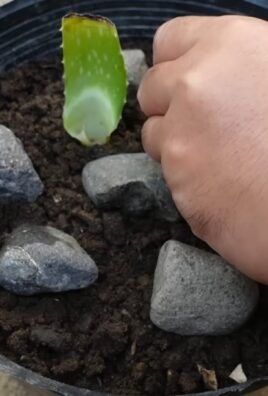
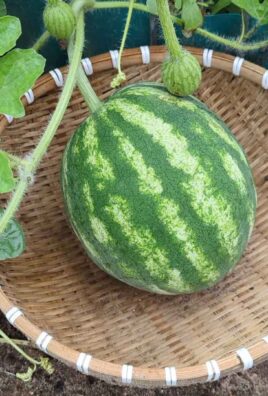
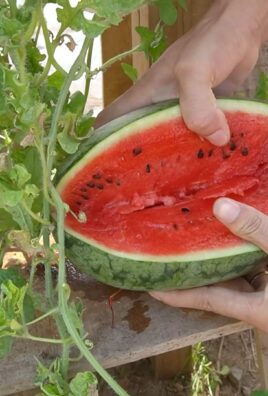
Leave a Comment